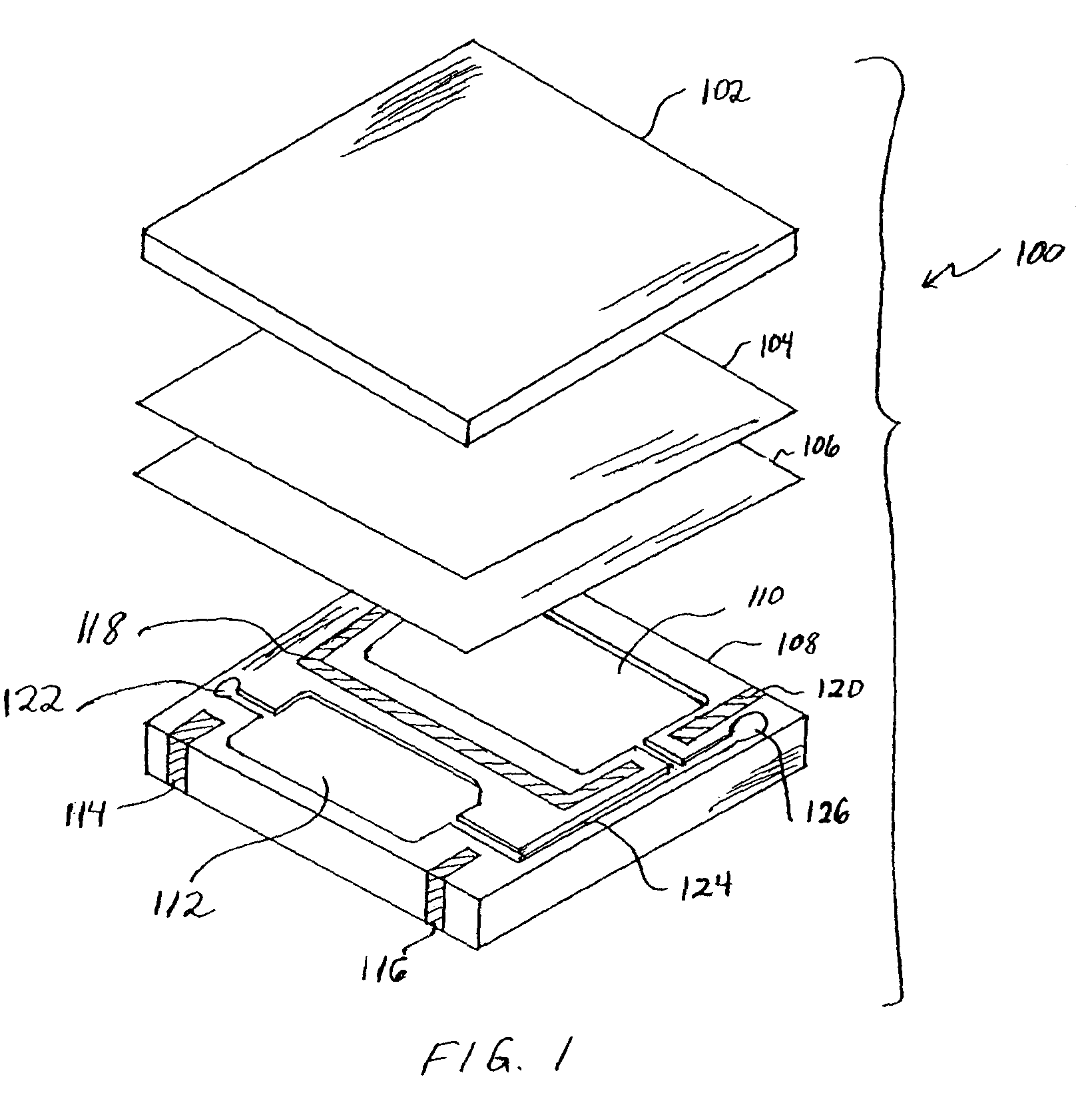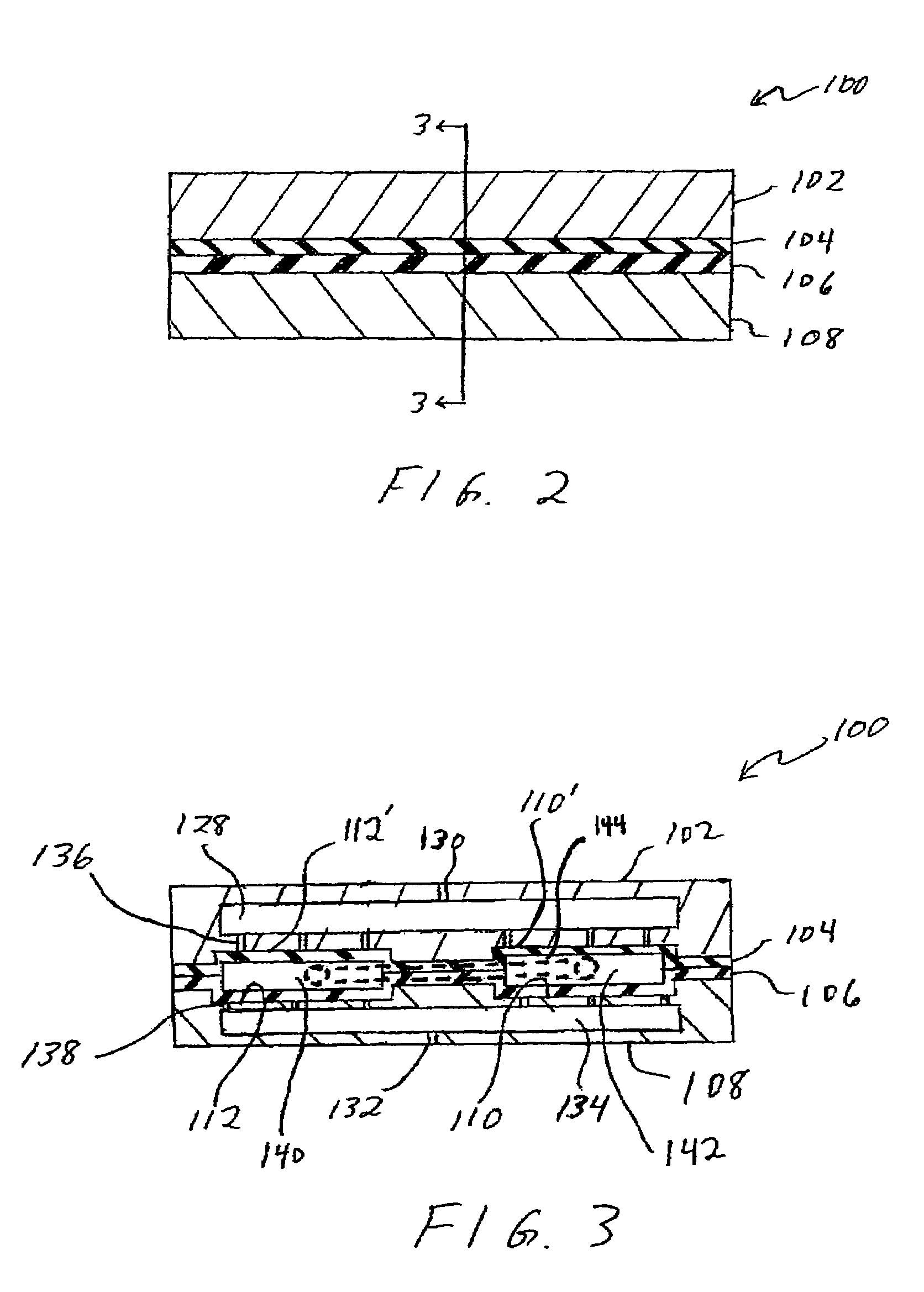Microfluidics chips and methods of using same
a technology of microfluidics and chips, applied in the field of microfluidics, can solve the problems of inability to prevent contamination of actual fluidic circuit components, difficulty and time consumption, and undesirable blood contact with the patterned surface of the wafer, and achieve the effect of reducing or overcoming
- Summary
- Abstract
- Description
- Claims
- Application Information
AI Technical Summary
Benefits of technology
Problems solved by technology
Method used
Image
Examples
Embodiment Construction
[0037]The microfluidics chips and methods of the present invention utilize thin polymeric barrier films over patterned parts. As used herein the term “patterned” includes, but is not limited to, machined parts and parts having patterns created by other methods, for example printing, embossing etching, and the like. The polymer polymeric barrier films are disposable, allowing the patterned parts to be reusable. In place of conventional wafer to wafer bonding to form microfluidics channels and chambers, the top and bottom wafers may be mechanically clamped together during operation of the chip. Between the two wafers, two thin polymer barrier films are inserted. Vacuum may be used to draw the polymeric barrier films against the patterned wafers. The two wafers are mechanically clamped together to form an assembly and is ready to use. After use of the lined microfluidics chip, the polymeric barrier films can be disposed of and the patterned parts can be reused. Since the two wafers are...
PUM
| Property | Measurement | Unit |
|---|---|---|
| thickness | aaaaa | aaaaa |
| width | aaaaa | aaaaa |
| depth | aaaaa | aaaaa |
Abstract
Description
Claims
Application Information
 Login to View More
Login to View More - R&D
- Intellectual Property
- Life Sciences
- Materials
- Tech Scout
- Unparalleled Data Quality
- Higher Quality Content
- 60% Fewer Hallucinations
Browse by: Latest US Patents, China's latest patents, Technical Efficacy Thesaurus, Application Domain, Technology Topic, Popular Technical Reports.
© 2025 PatSnap. All rights reserved.Legal|Privacy policy|Modern Slavery Act Transparency Statement|Sitemap|About US| Contact US: help@patsnap.com



